This is a guest post from Mark Cirillo at Leadsbridge.
Statistics have shown that email marketing can be an effective and proven strategy to generate leads and customers for any business. However, many businesses may not know how to implement it in the most effective ways.
Email engagement is higher in comparison to other forms of communication. In fact, email marketing has a statistically higher ROI and click-through rate than paid advertising.
And did you know? The average open rate for email is 17.92%, with certain industries boasting an even higher rate.
Click here to find out the best day to send your emails.
However, engagement and opens are just one piece of the puzzle. The pertinent question here is: will those who read your emails convert?
The average ROI of email is 4400%. But the truth is that not every email you send will get that ROI. Some emails produce better conversions than others.
Read on to learn how to build an effective follow-up sequence to increase your email campaign conversion rates.
1. Welcome email
A welcome email is the first email your subscriber receives when they join your email list. It’s the first point of contact you have with them. It’s important because:
a. Studies show that 74.4% of consumers are waiting to receive a welcome email from you when they subscribe.
b. Subscribers who receive a welcome email show about 33% more long-term engagement with the brand.
Here’s the best part:
Welcome emails receive more than three times the transactions and revenue per email over regular promotional emails.
A welcome email helps you welcome new subscribers to your business. It’s an avenue for you to give them incentives, set expectations, and encourage them to connect with you on your other channels.
A welcome email should contain an introduction that familiarizes your audience with your brand. Let them know who you are and what your business does. Build their expectations with your content and share helpful resources that’ll help them solve their pending problems.
You can package it in the form of eBooks, white papers, guides, blog posts, podcasts, or videos. Encourage them to connect with your social media networks by including links to them at the end of the email.
Check out an example of an effective welcome email from Nomad below:
It looks simple, clear, and concise. Did you notice the introductory part? It tells subscribers who Nomad is and what they sell.
2. Q and A email
New subscribers will always have questions to ask you. Regardless of the kind of content you put on your website, they’ll always want to know more about your business.
Asking your audience questions is a great way to better understand them and their needs. You may want to ask them simple, open-ended questions that’ll help you understand their struggles so you can craft better content to resolve issues.
Try asking your subscribers: What inspired you to sign up? This is a very important question to ask new subscribers because it’ll help you determine what they’re looking for on your website.
You should also offer to help: Is there a particular pain you’re hoping we can help you solve? This will help you to know what they’re struggling with and how to help them out. Other questions you can ask include:
- How can we further help you?
- What would you like to improve in your business in the next year?
- What are you struggling with the most in your business?
- What kinds of things have you tried to solve X problem in the past?
Another great example is from Canva.
They provided common sample questions that their subscribers tend to ask. They also asked them to reply to the email with similar questions:
It’s a great way to demonstrate your expertise and also provide genuine help to your subscribers.
3. Benefits with the proof
It’s a great idea to let your visitors know what they’ll be getting once they opt in to your email list. You can show potential subscribers the testimonials of your past customers, highlighting how they used your products or services to solve their problems, which will help them to overcome any potential objections about your product. Here’s a great example from Emma.
“Benefits with the proof” emails can be perks that let your subscribers know that being part of your email list was a great idea.
An example of this email in practice is this one from Birchbox, a cosmetics company. It lists the kinds of perks that new subscribers will get when they sign up:
Check out the perks they’re offering their new subscribers:
- Four-to-five free deluxe samples of high-end beauty and lifestyle products that are customized
- Tips and tricks from the editor of the Birchbox magazine.
These are enticing perks that are designed to keep them coming back for more.
4. Nurturing sequence
As a business owner or marketer, when you nurture your subscribers, you can get up to 50% more sales-ready customers that can make 47% larger purchases.
Most businesses aren’t nurturing their subscribers properly. This is like leaving money on the table. According to ReEngager’s 3/47/50 rule, 3% of your visitors are ready to buy now, 47% of your visitors are not in the buying mood (but they may be in the near future), while 50% of your visitors will never buy.
The problem here is that most businesses focus on the 3% that’ll buy now and neglect the 47% that’ll buy in the future. You have to create a balance here. Focus on the people that are ready to buy and nurture those that’ll be buying in the future.
You can create different types of nurturing emails, such as education emails, emails inviting them to further connect with you on your social media channels, regular offers that correspond to their level in the sales cycle, etc.
When creating nurturing emails for your subscribers, ensure that your content is interesting and helpful.
A good example of a nurturing email is this one from Michaels, an art supply, craft, and framing store.
The email above is all-encompassing.
- It teaches their audience how to customize the emails they receive.
- It informs them about their classes and events.
- It encourages them to shop everywhere.
- It informs them about their coupons and deals, etc.
Wrap up
Email marketing is a great way to drive leads and sales to your business.
But you have to know which email follow-up sequence will convert for your business. Above are four different follow-up sequences you can use. Each type of email will convert differently, so choose the best one for you. You can also combine two or three sequences together to get the best results.
What type of email drives the best campaign conversion rates for your business?
Want to know more about lead generation? Take a look at this list of 101 tips to boost your lead generation results.
Mark Cirillo is a Growth Hacker at Leadsbridge. He is an eager digital marketer, nurtured by news and strategies of this world, helping people and businesses to build and reinvent their online presence.










